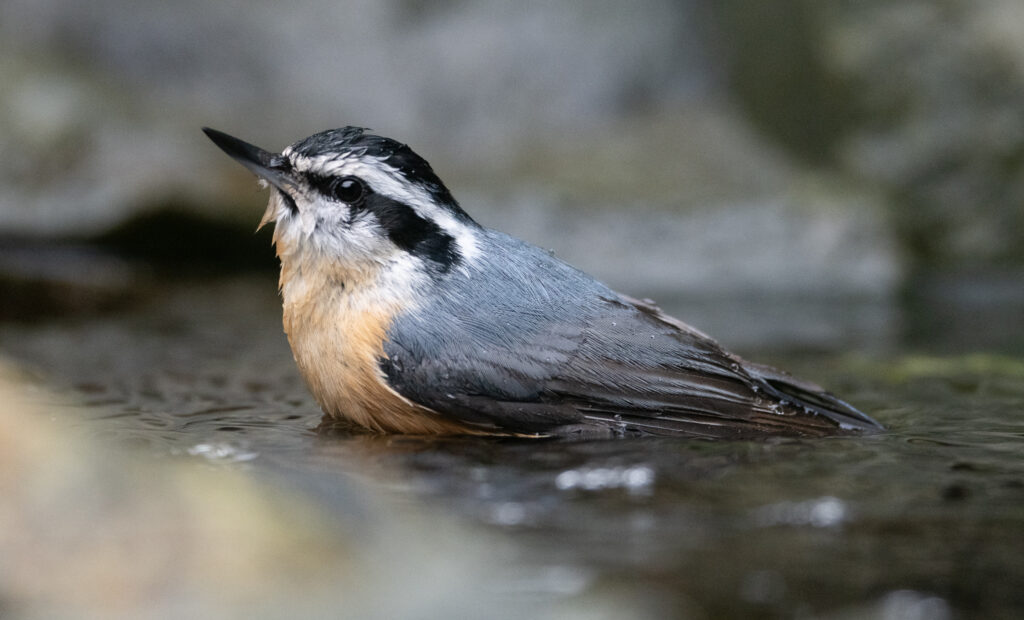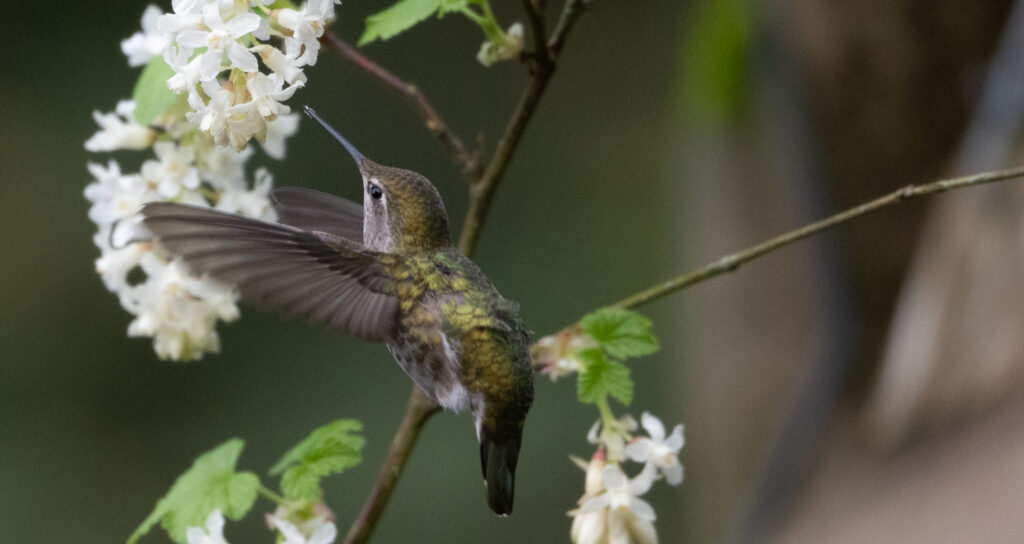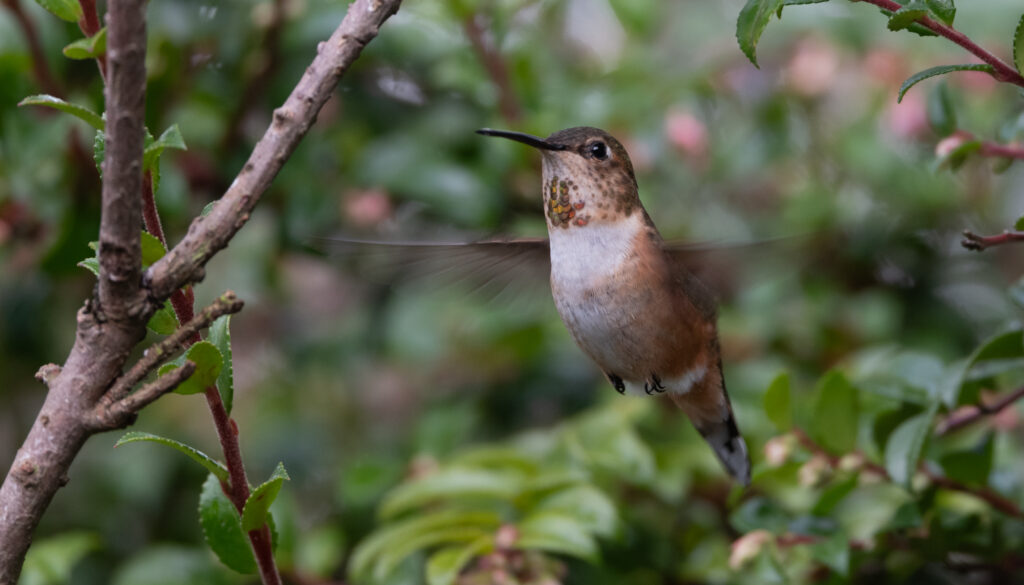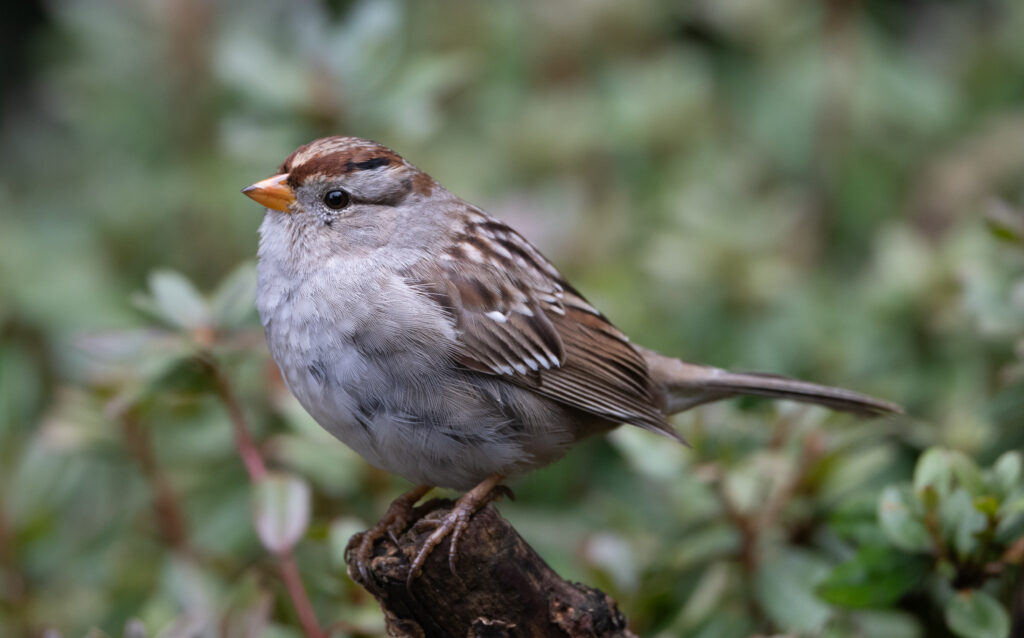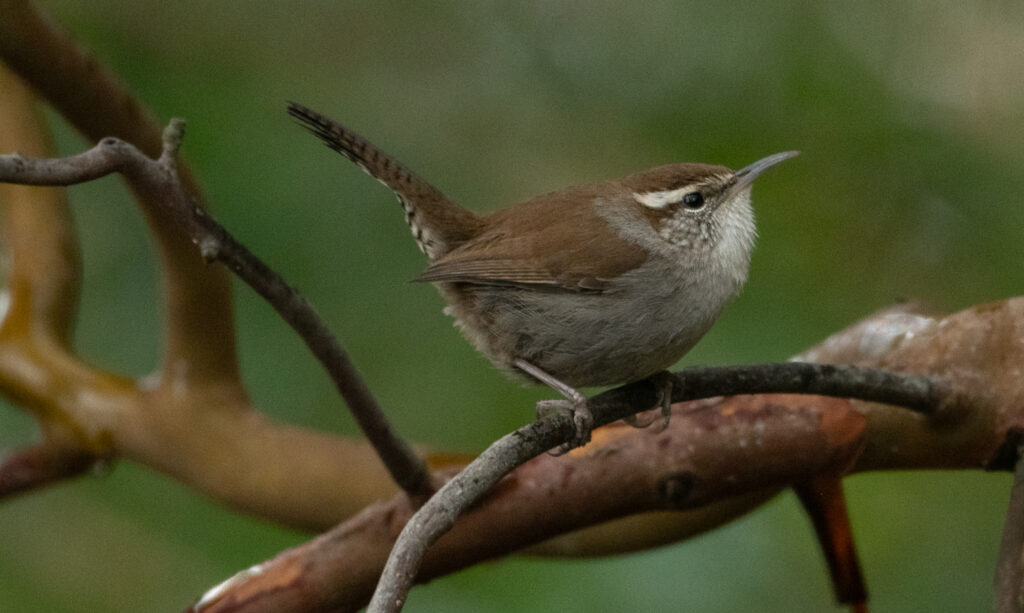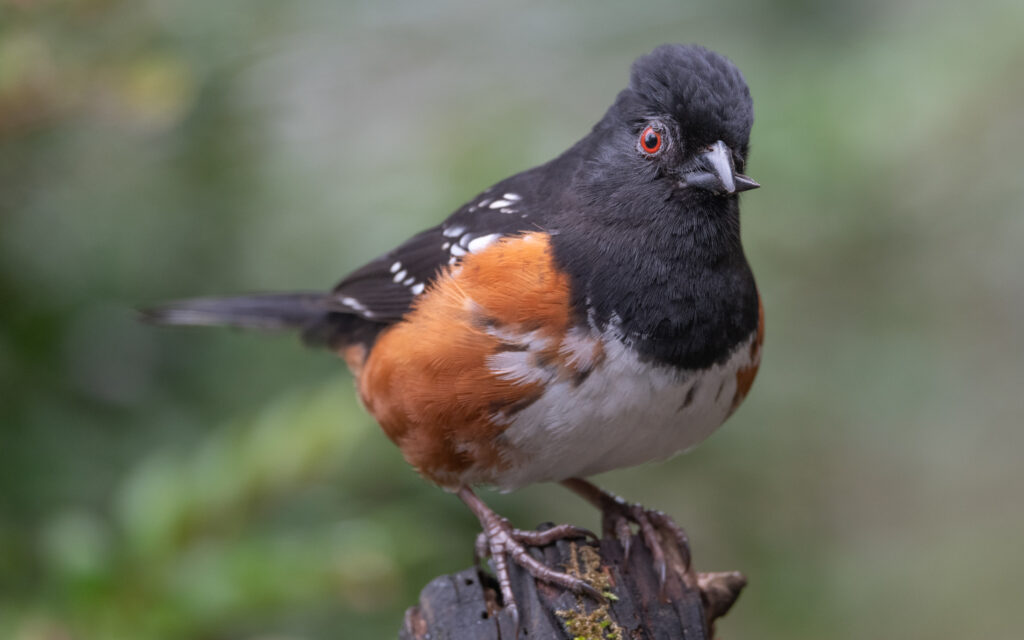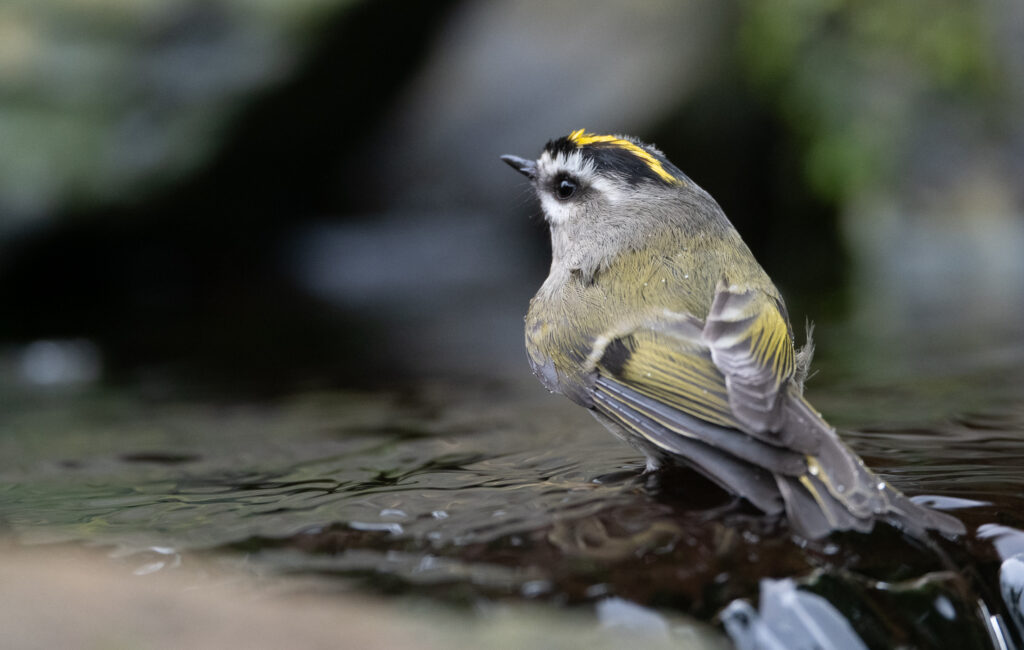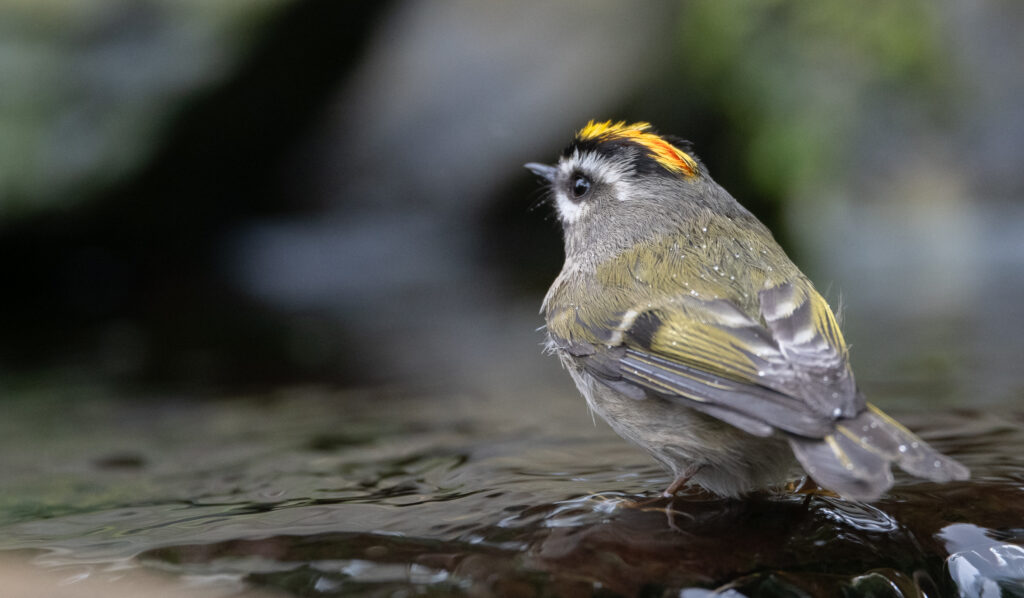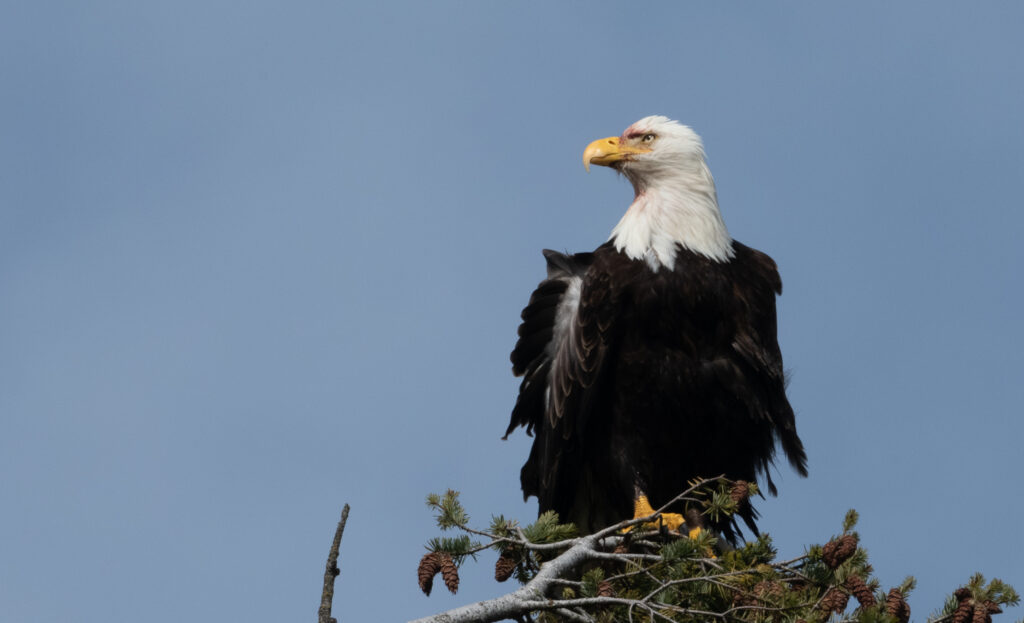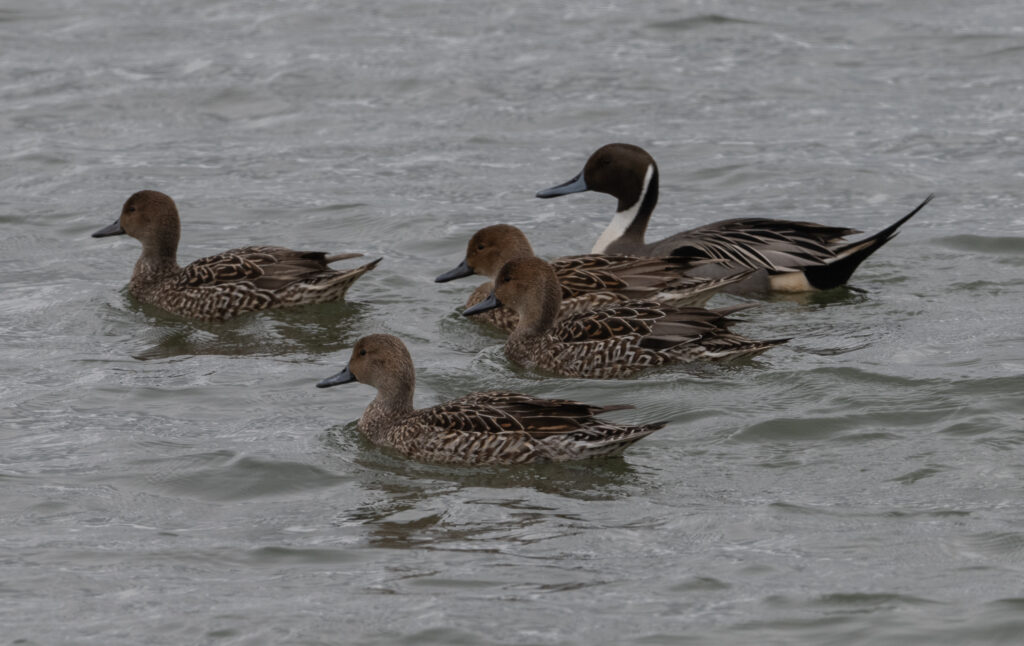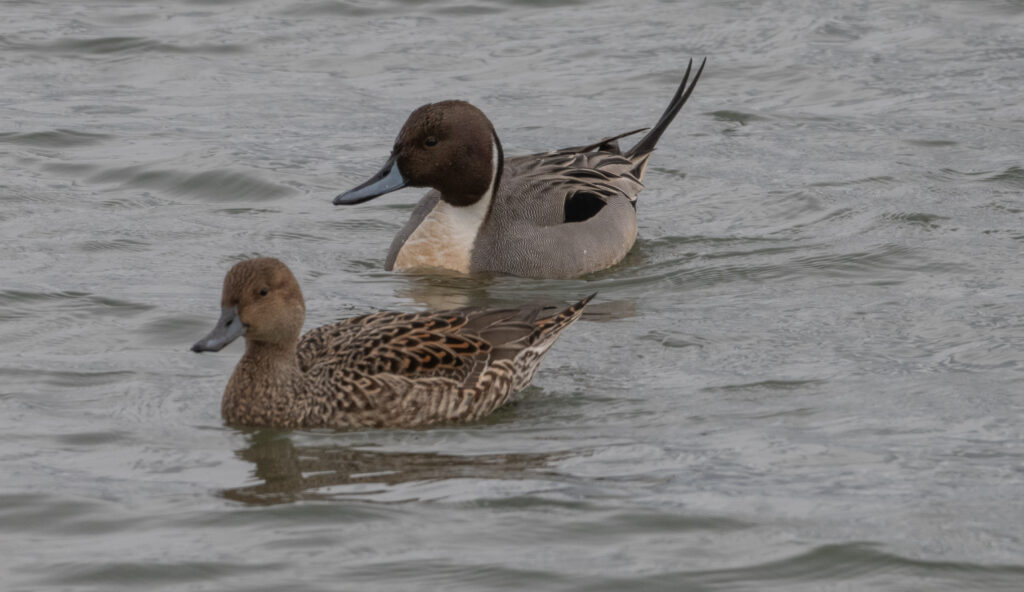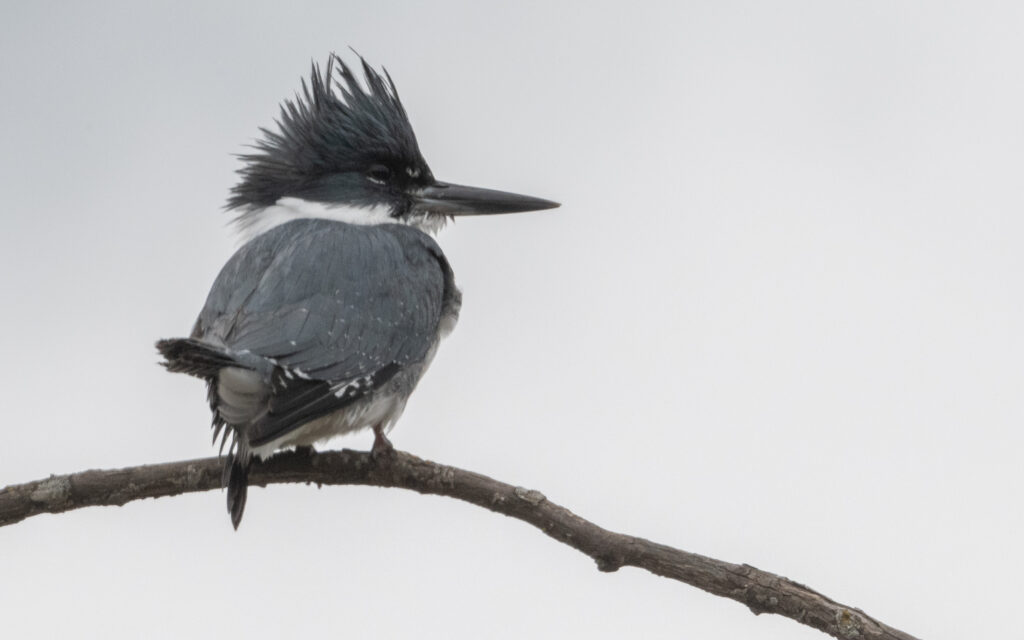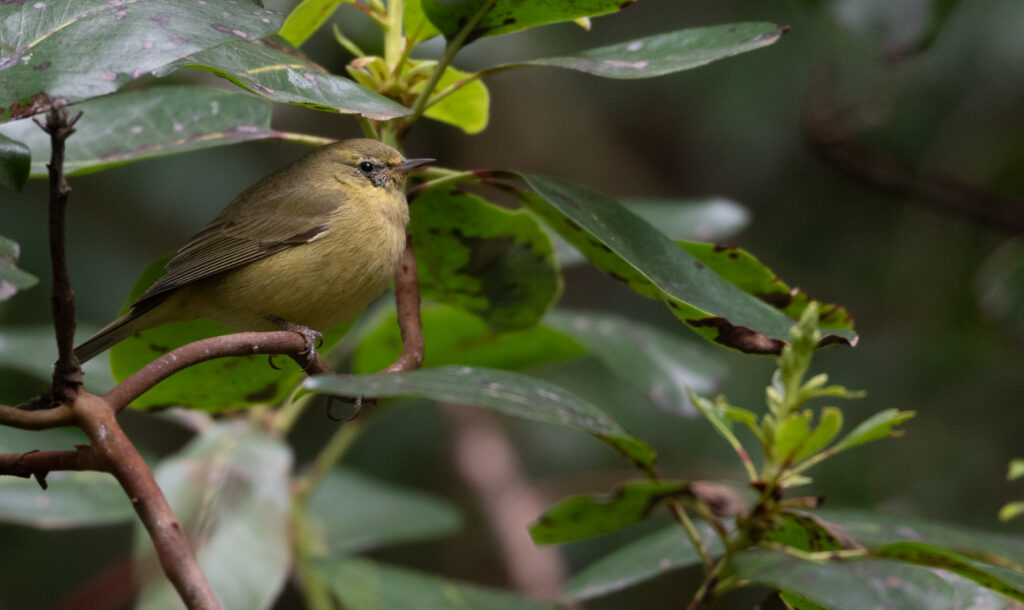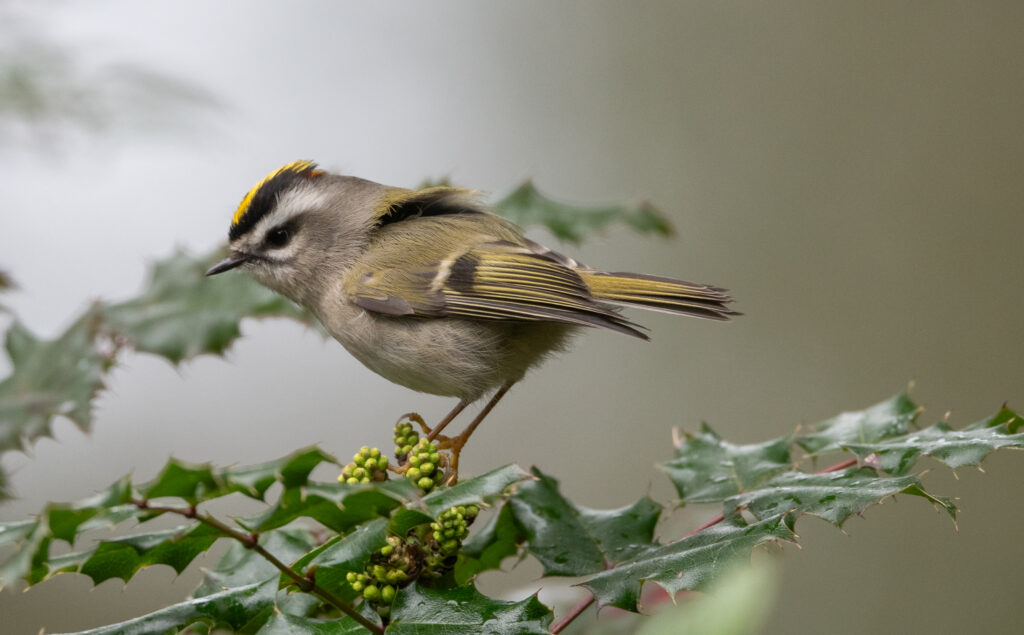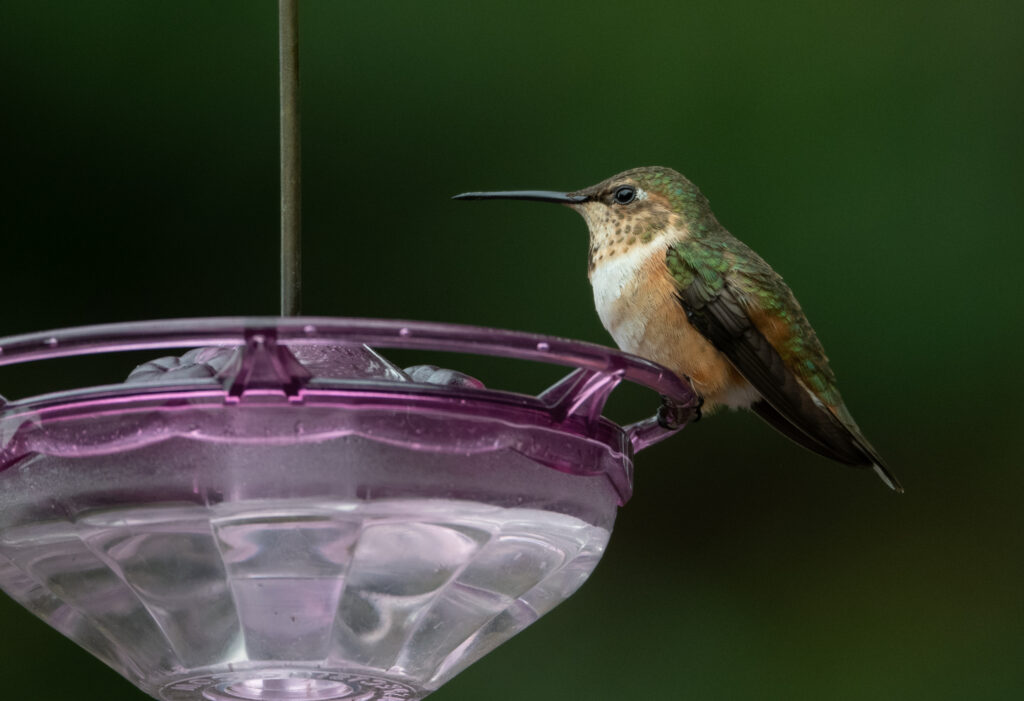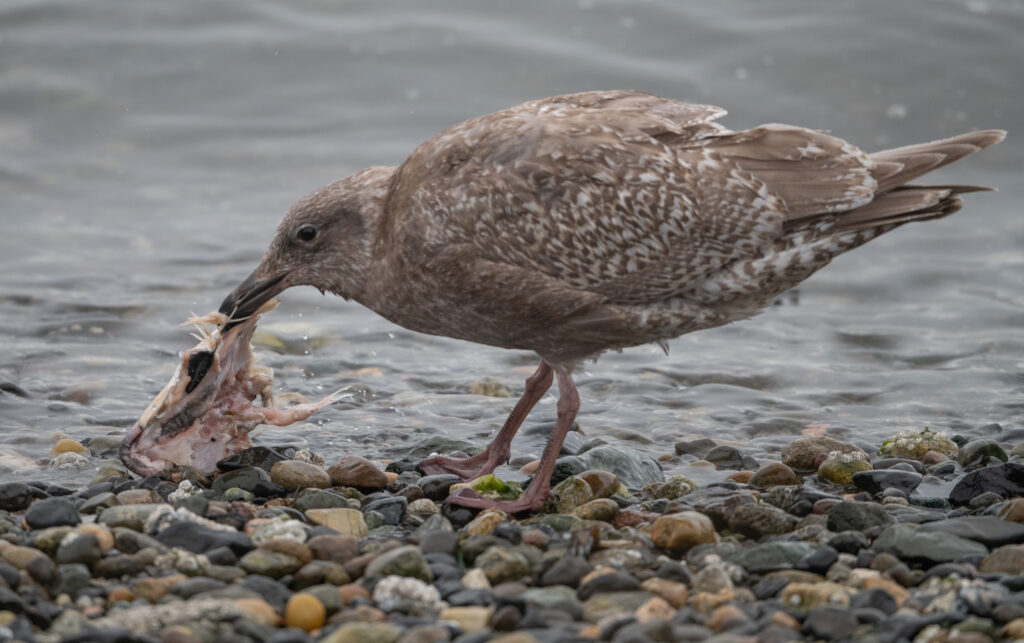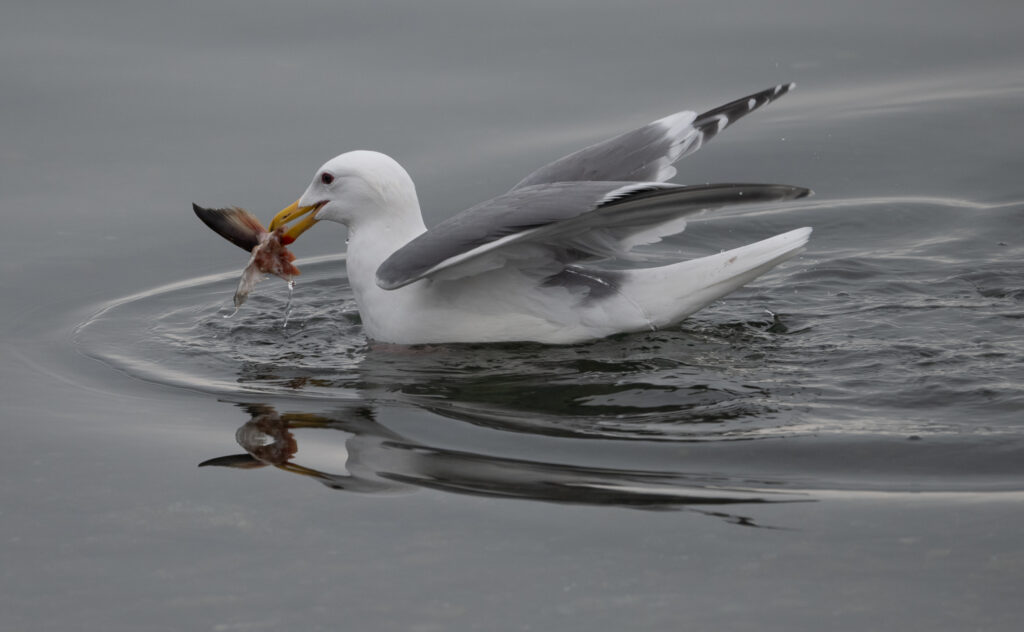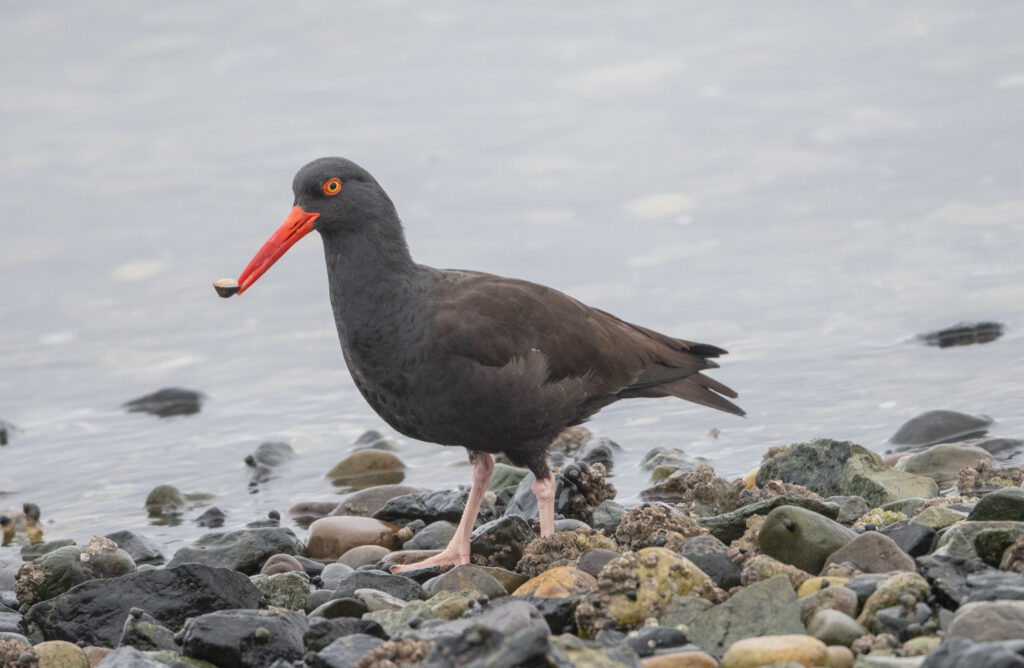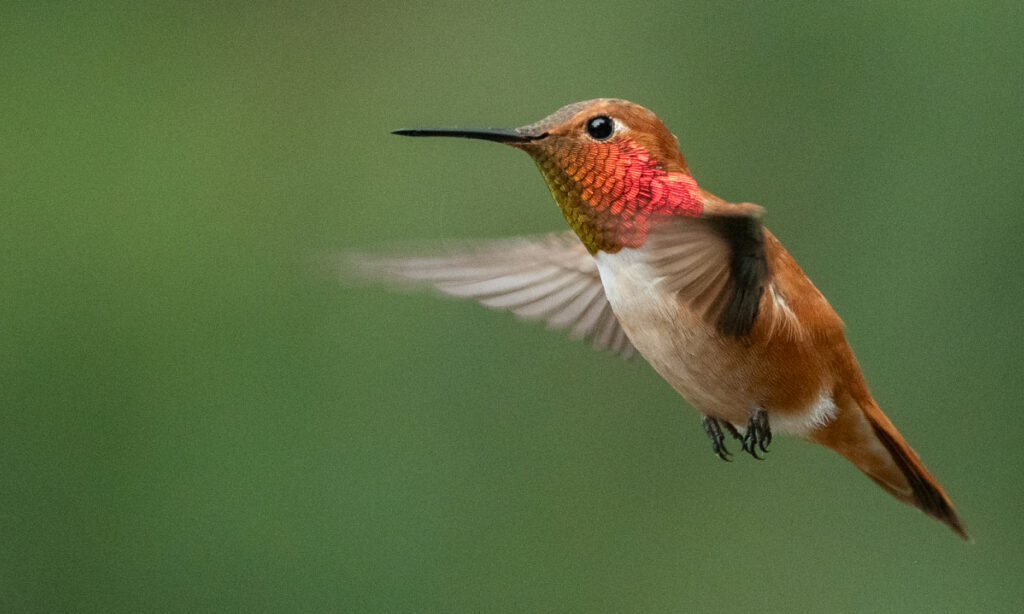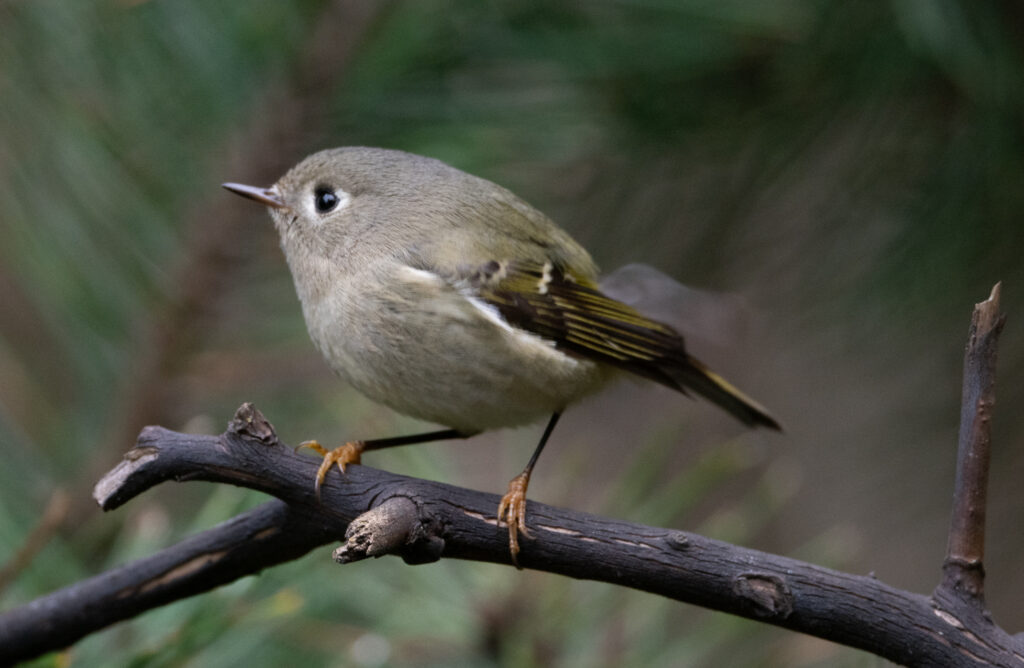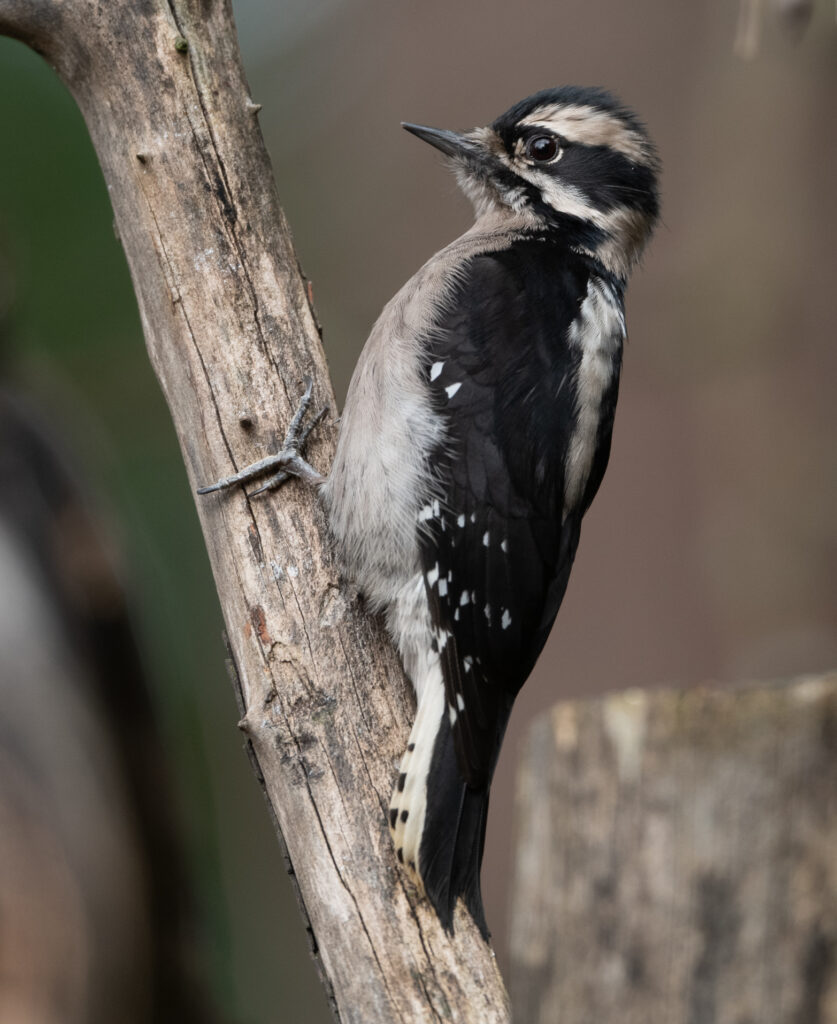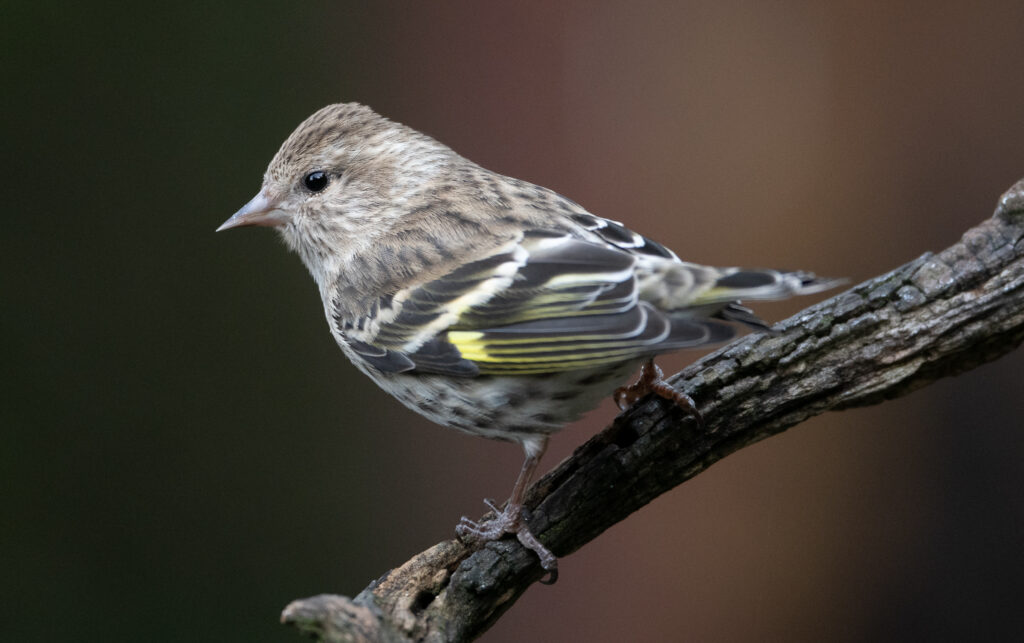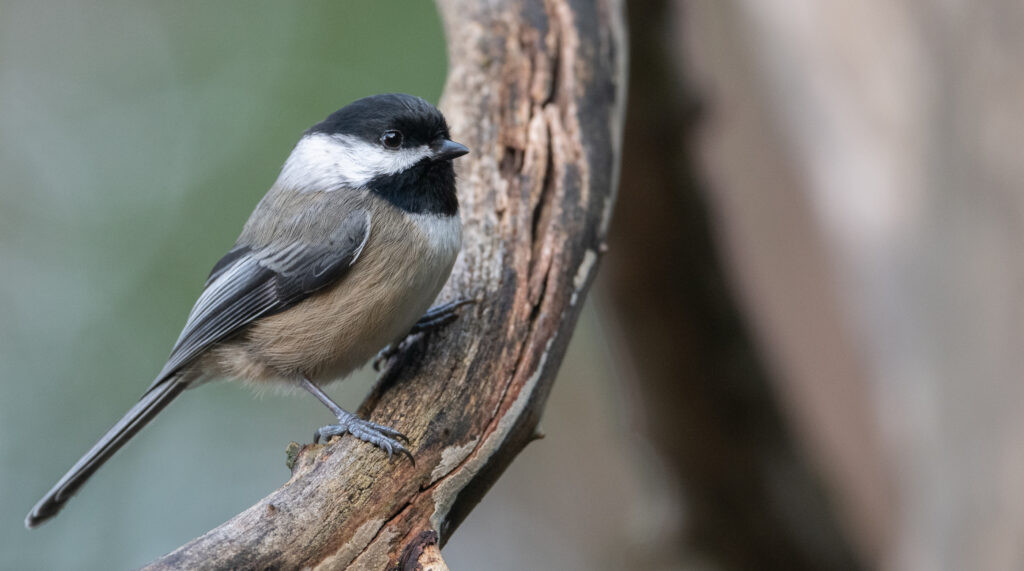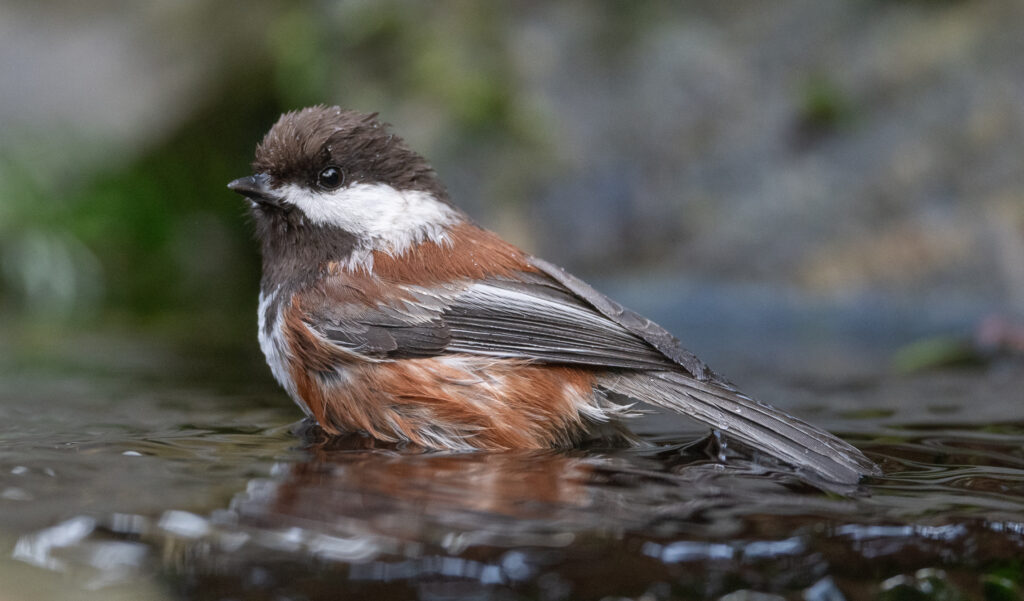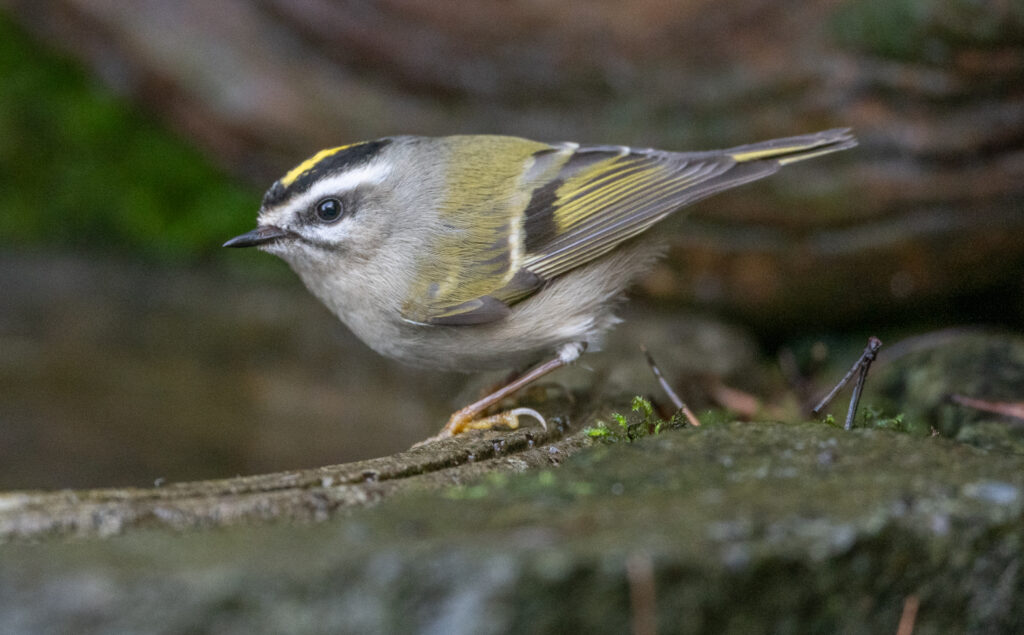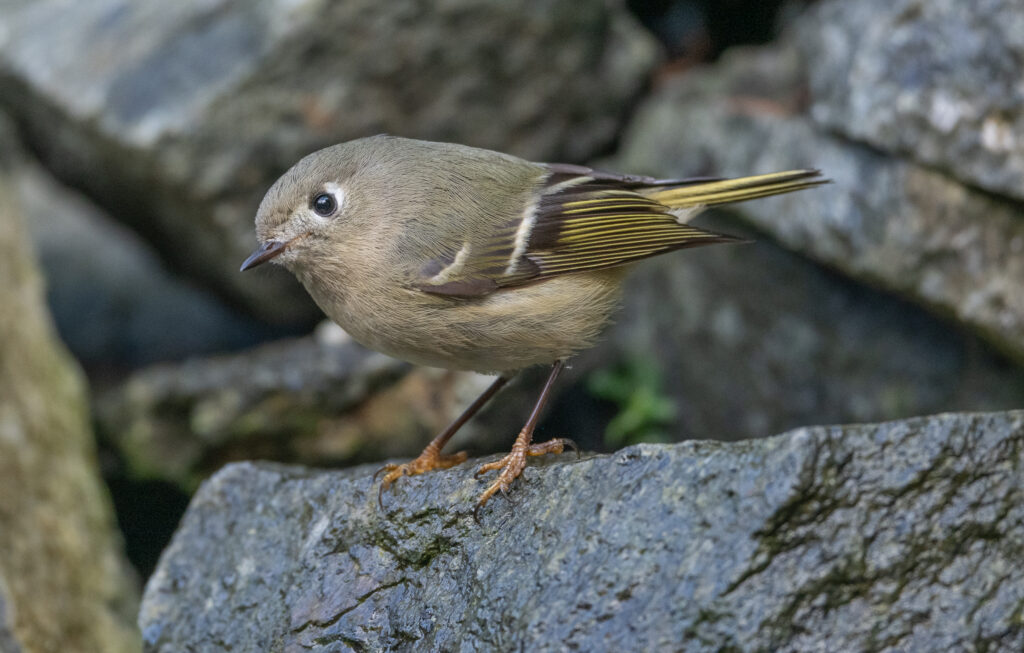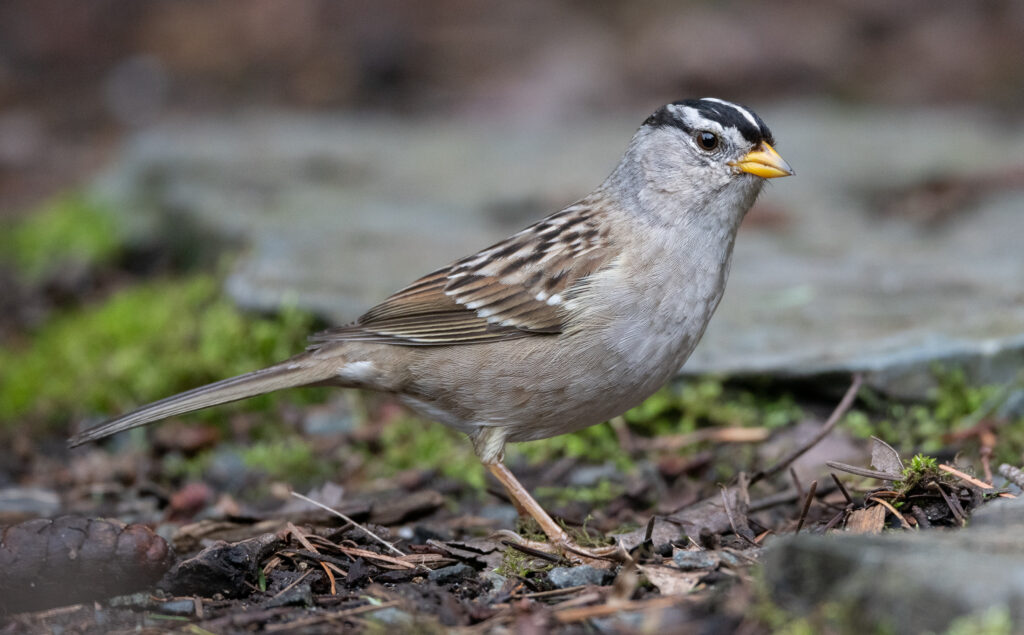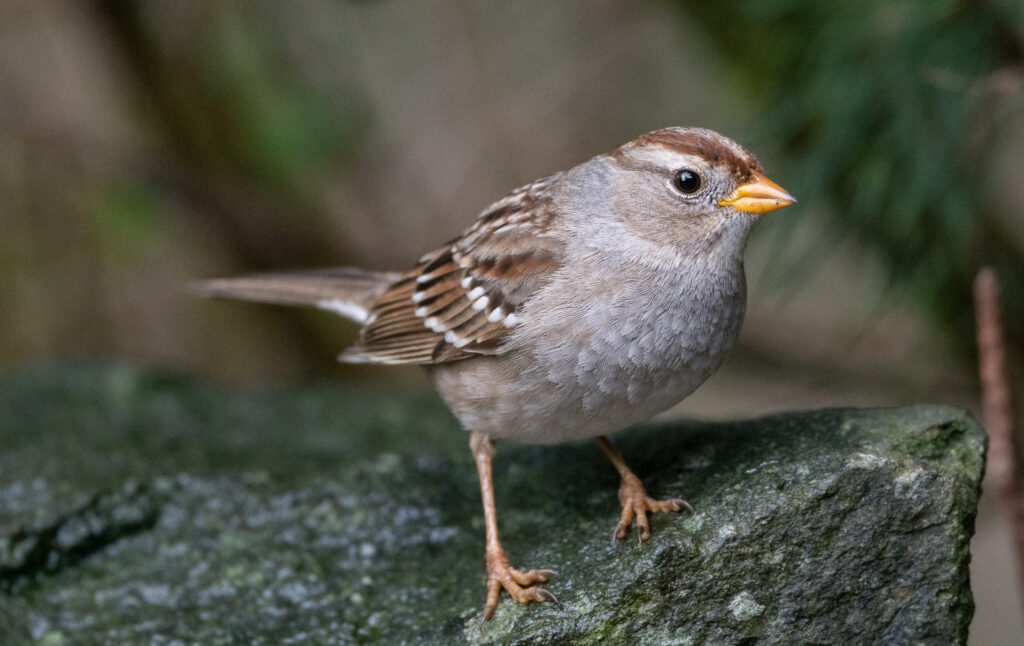By early April I was anxiously anticipating the arrival of a first spring warbler. In 2024, as I recall, I didn’t start to see warblers until the very end of April, and it seemed the early warblers were predominantly Yellow-rumpled warblers. But when it comes to bird sightings/visits, hope springs eternal! I had been trying to spend time in the yard every day looking for spring arrivals.
On the afternoon of April 11, 2925, I was sitting in the yard watching much the same “winter crowd” species I had been watching for the past several months. New arrivals in the past several weeks consisted of Rufous hummingbirds, now quite scarce, Turkey vultures and, as of late, a few American goldfinches. (The goldfinches are in the greater area year-round but the seldom visit the yard in winter. On this day I got a fleeting glimpse of my first female goldfinch.)
Most of the Dark-eyed (Oregon) juncos seem to have already left for breeding grounds at higher elevations, leaving me with Pine siskins and Golden-crowned sparrows as the main subjects for my birding photography.
On this afternoon I was sitting in the yard, listening to the vocalizations of the Pacific Tree frogs when a backlit bird in a Madrona tree caught my attention. As I watched it move through the tree I realized it was an Orange-crowned warbler, which I’m personally declaring as my first spring migrant visitor. I was initially somewhat conflicted with this declaration, but here is my reasoning behind it.
The Orange-crowned warbler is probably my most common year-round warbler visitor, and for at least a couple of months I had one which was an almost daily visitor and who was visiting three different feeders: suet, sunflower and peanut! But that bird took a leave of absence two or three weeks ago.
This warbler took a different route through the yard, totally ignored the feeders, briefly visited the watercourse and left the yard after only a very brief visit, behavior totally different from my winter daily visitor. And that is why I feel strongly that this warbler was a different bird and new arrival.
These photos aren’t up to my usual standards but I feel this visitor needs some recognition, so here is the bird I’m declaring as my first seasonal warbler visitor.
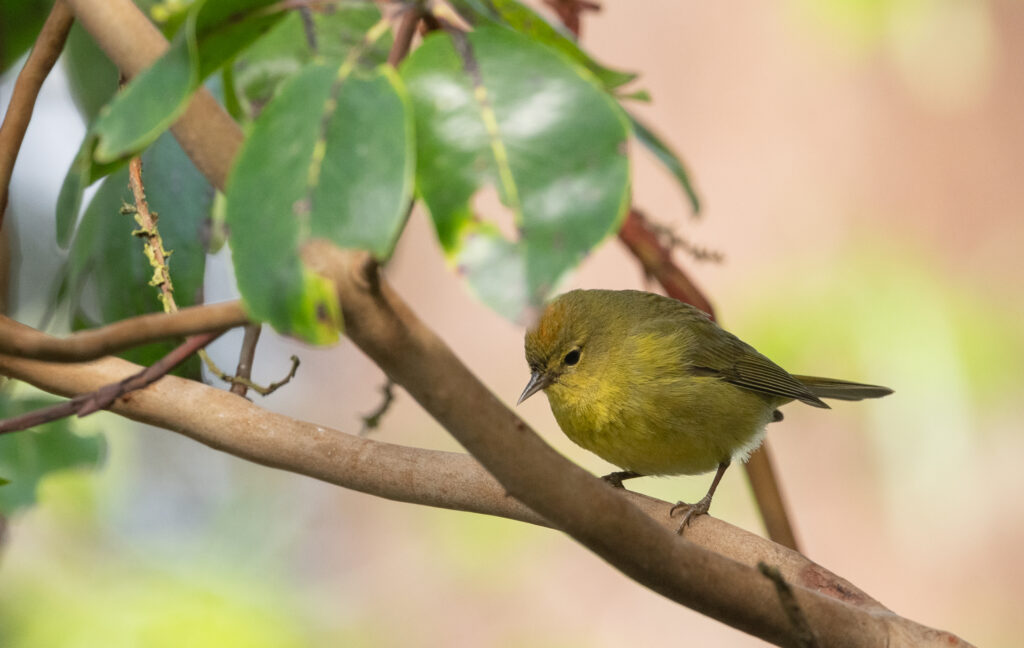
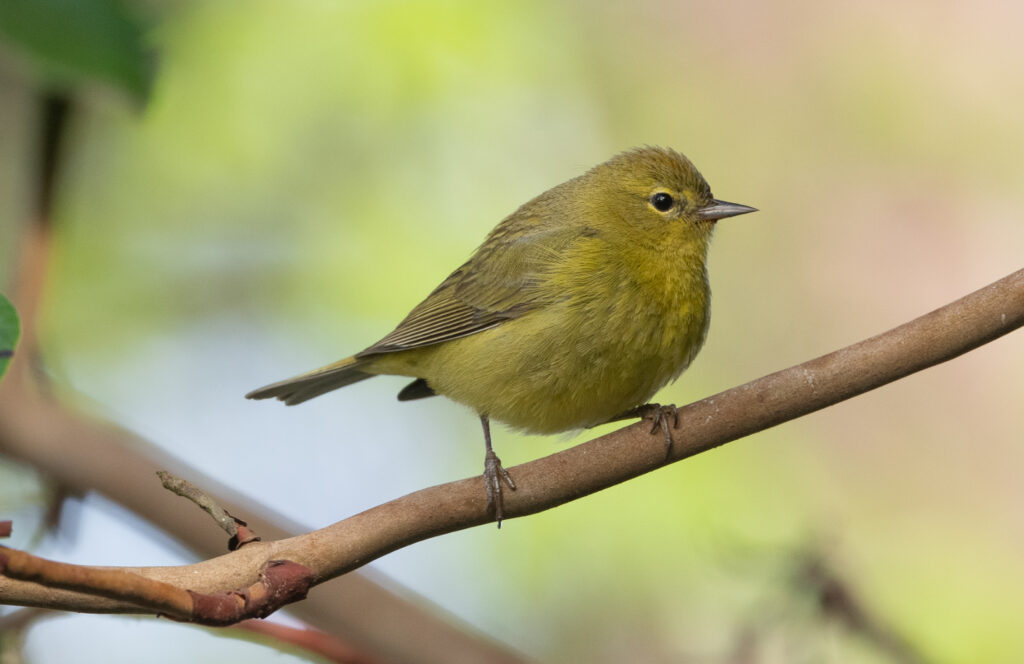
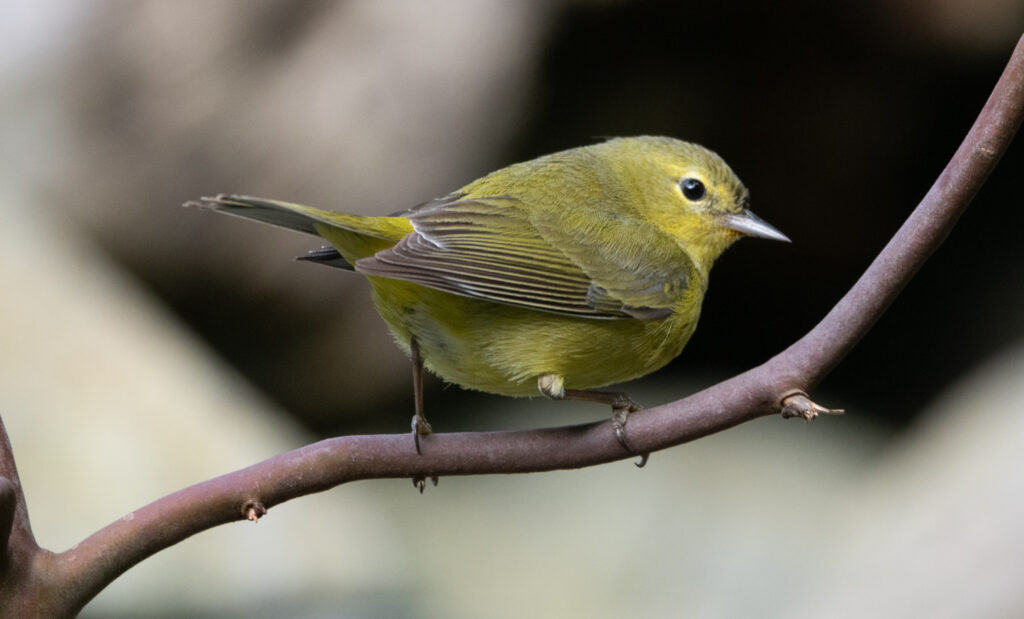
As a special bonus, in the first photo you can actually see the bird’s orange crown, the trait for which the bird is named. I usually only get to see the orange crown when the bird is bathing and its head gets wet.

